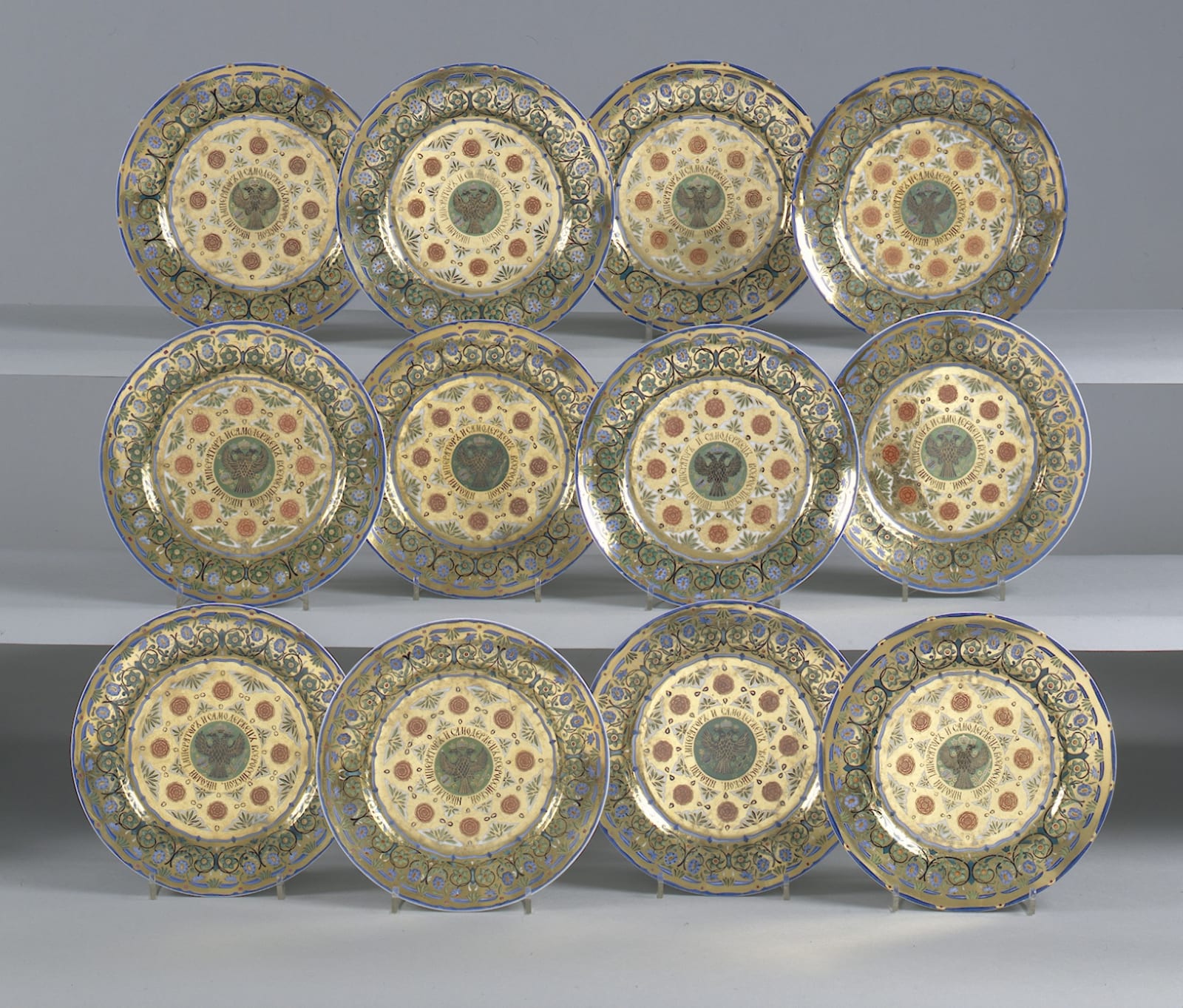
Twelve plates from the Kremlin Service Imperial Russian Porcelain, Circa 1825 – 55
Twelve St. Petersburg Plates from the magnificent Imperial Russian Banqueting Service used at the Coronations of the Tsars
In 1758, while the Empress Elizabeth was on the throne, the Russian Imperial Porcelain factory began regular production in St. Petersburg.
Under Empress Katherine II, who reigned from 1762-1796, important services were made in the French and German styles. A few years later, Emperor Alexander I was responsible for bringing many French artists and technicians into the service of the factory, including Swebach of Sèvres. Among the many famous commissions during this time was the service given by Alexander to his sister Katherine, Queen of Würtenburg.
These twelve plates (part of a large service) were made originally for Emperor Nicholas I who personally encouraged the production of porcelain. The service was among those used for the Imperial banquets held on such occasions as the Coronation, for ecclesiastical and diplomatic functions, and at the commissioning by the Tsar, who alone could confer a commission, of as many as two hundred officer cadets.
All the plates with a crowned N over I in cyrillic script and blue for Tsar Nicholas I who reigned from 1825 – 1855. The centre of each plate painted with the Imperial double headed eagle with blue crown, orb and sceptre, the gilt surround inscribed in black. Translated as – Nicholas Tsar and Suzerain of all the Russias. Within a band of eight iron red rosettes on gilt wedge-shaped grounds , with panels of leaves, the gilt border reserved with scrolling convolvulus and other flowers.
Join our mailing list
* denotes required fields
We will process the personal data you have supplied in accordance with our privacy policy (available on request). You can unsubscribe or change your preferences at any time by clicking the link in our emails.